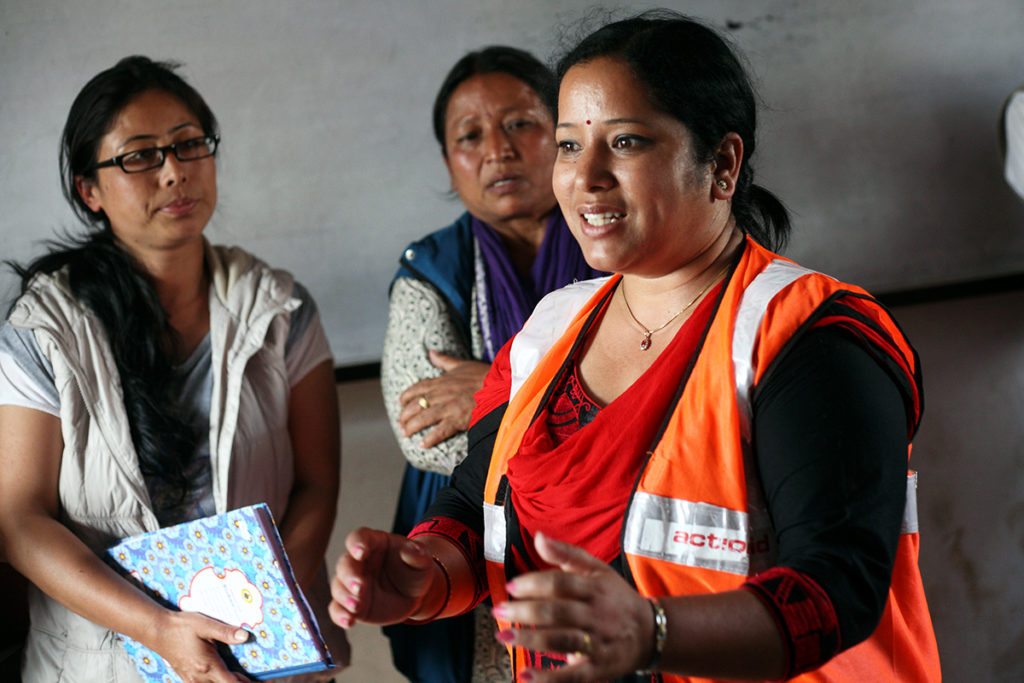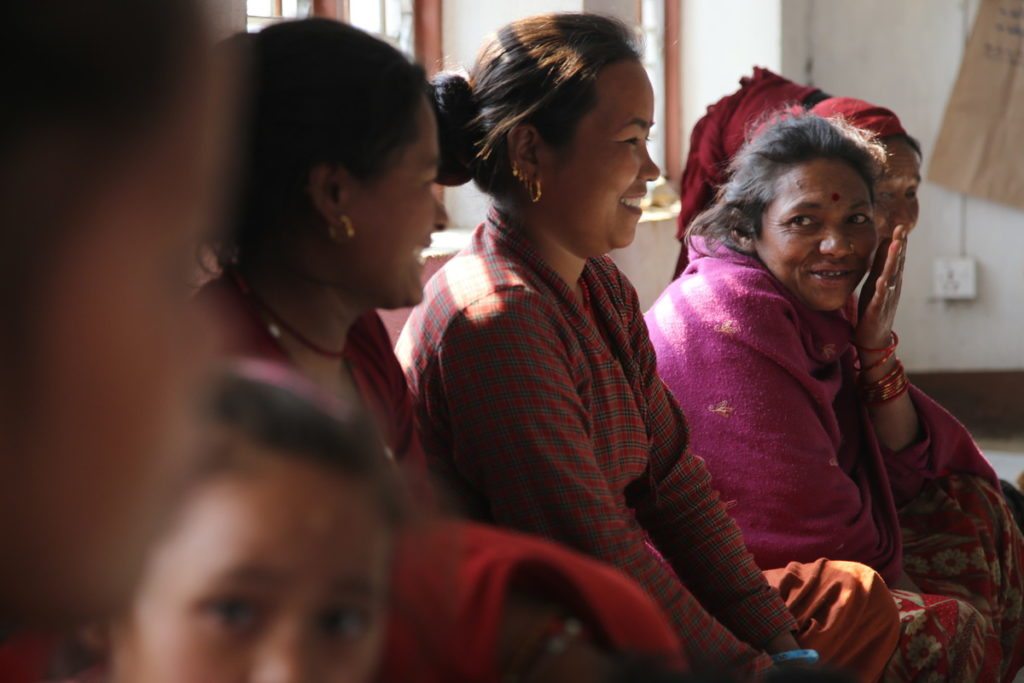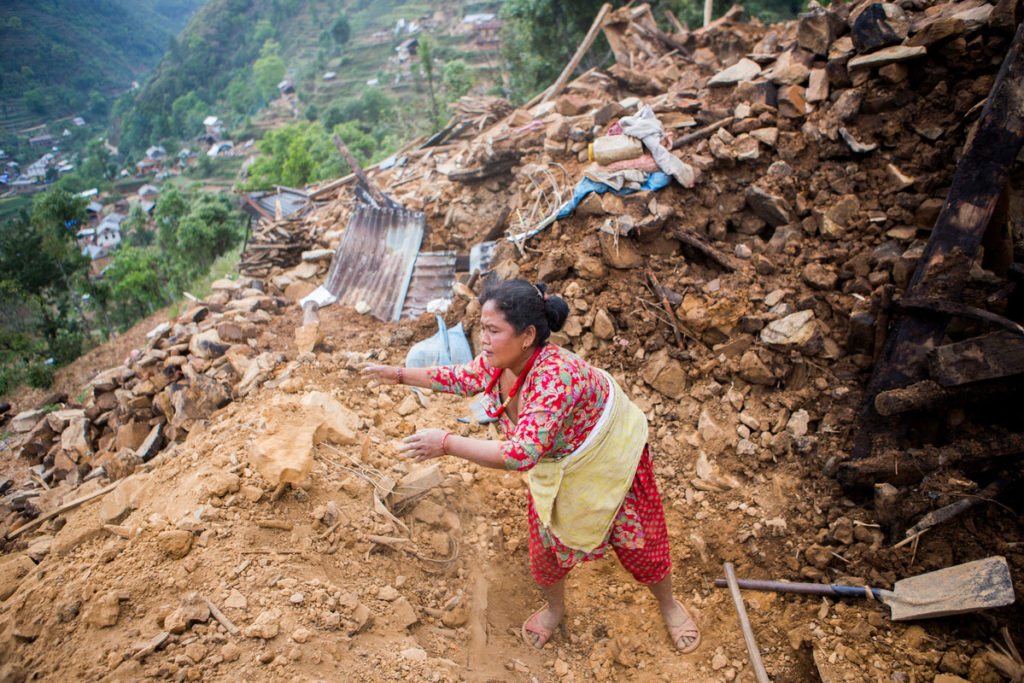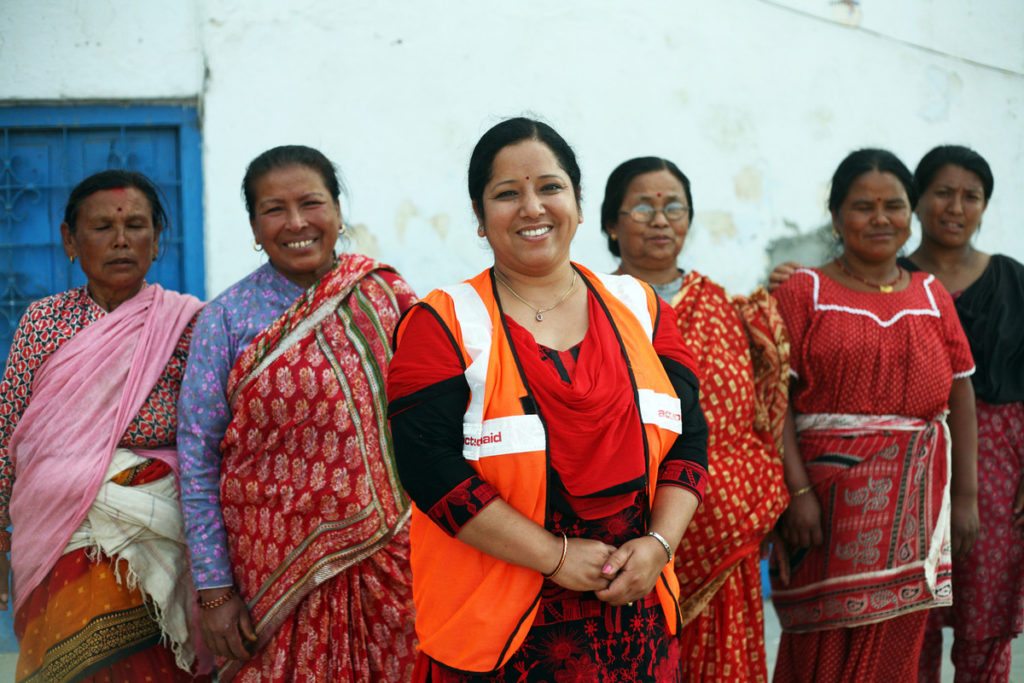by ActionAid Australia
On April 25 2015, Malati Maskey was in Kathmandu at a five-day training for women leaders when the first 7.8-magnitude earthquake struck. Thousands of people lost their lives, and hundreds of thousands more lost their schools, homes and livelihoods.
As the Knowledge, Policy and Governance Manager and focal person for women’s rights at ActionAid Nepal, Malati ended up staying in a damaged building for 3 days following the earthquake to take care of the 25 rural women who had come for the training, but were now far from their families and feared for their safety. After that, Malati continued to be integrally involved in ActionAid Nepal’s ongoing emergency response, recovery and preparedness work that places women’s leadership at the center of its approach.

Malati Maskey addresses local women in Panga after the second earthquake hit Nepal on May 12, 2015. [Srikanth Kolari/ActionAid]
Here are a few highlights from our conversation:
Q. How has the wider community changed since women have become more involved in emergency response and recovery? How have gender relations in communities changed since the earthquakes?
A. We’ve been able to provide evidence that women can be contributors to emergency response programs, they’re not just survivors. And this has been clearly realised by the communities. That was the great achievement we made so far, showing that women can be first responders. Many women have sacrificed their lives to save other lives. That was the finding of our study which we shared with the community, and they realised that yes, definitely women are first responders.
We changed people’s mindset that women can’t do anything. They can do everything. That’s the mindset we’ve been able to change.
Q. Comparing women’s circumstances in 2015 with how they are now, what has been the impact of the emergency response on women’s lives? How have their lives changed since being involved with the Women Friendly Spaces and Reflect Circles?
A. One great example is what happened when in 2017 we had local elections. After the earthquake we created Women Friendly Spaces where women could build their knowledge, and enhance their skills, and now the women are more visible in the community and the community can see their contributions. Many of the women ran for local elections and were elected. Now they are the representatives of their local communities. So their leadership has been enhanced, and now they are in policy making roles. Previously they were demanding, now they are in the policy making chair. That’s a huge transformation in women’s lives.

A Women Friendly Space established in the aftermath of the Nepal earthquakes. [Jo Harrison/ActionAid]
A. If you’re thinking about a greater impact on the women’s movement, the women’s movement never talked about women in emergencies. The women’s movement was not linked with humanitarian crises.
After this earthquake, now the women’s movement are integrating the humanitarian agenda in their movement, and also talking about women’s leadership and their contribution.
They are talking about how women can be contributors in humanitarian response, and it was not like that previously. That was one of the biggest realisations of the women’s movement in Nepal.
Also, if you think about the response during the emergency, you know we can’t put everyone in the same basket. The response has to be addressed intersectionally, considering the diversity of the group. If we put everyone in the same basket, then the most marginalised will be women. This was brought to light in the aftermath of the earthquakes and the agenda of intersectionality was clearly identified by the women’s movement after this earthquake. Now they are talking about intersectionality. That was another one of the big transformations in the women’s movement in Nepal after the earthquake.

A woman clears debris from where her house stood before the earthquakes. [Prashanth Vishwanathan/ActionAid]
A. One of the biggest things has been changing the mindset of people and policy-makers.They always considered women as second class citizens and also considered them a vulnerable group. But once their leadership has been enhanced, and seeing the way they have worked during the emergency response, from response to the reconstruction phase – the way they are contributing, the way they are putting their energy – that’s really been able to show that women are not victims or the vulnerable groups. They are the contributors. Only social structures and people’s mindsets make them vulnerable. That is what women’s leadership has been able to achieve within these 3 years. I think that is one of the greatest transformations we have made and we have evidenced.

Malati Maskey with local women from Panga, Nepal. [Srikanth Kolari/ActionAid]
A. Next time, the threat to women will be reduced. Because women know how to cope with that situation. Women’s access to information was not there previously. But now they are in Disaster Risk Reduction management committees, they know how to do preparedness, so their death threat will be reduced. The immediate response systems will also be in place – the community has those mechanisms so that response will be immediately activated. So many of these vulnerabilities will be reduced.



